Research Article
Volume 1 Issue 4 - 2017
Fish Seed Availability, Quality, Quantity and Its Significance to Aquaculture Development in Zambia
The Copperbelt University, Kapasa Makasa University Campus, Department of Agriculture and aquatic sciences, Chinsali, Zambia
*Corresponding Author: Confred G Musuka, The Copperbelt University, Kapasa Makasa University Campus, Department of Agriculture and aquatic sciences, Chinsali, Zambia.
Received: June 27, 2017; Published: September 01, 2017
Abstract
A study to assess the availability, quality and quantity of fish seed and its significance to the aquaculture industry was conducted on the Copperbelt Province of Zambia. The study further determined how many farmers were involved in fish seed production, their performance, distribution networks and challenges faced. The information was obtained through administering of structured questionnaires, observations and personal interviews to 30 farmers and 4 producers of fingerlings. Farmers were selected using random sampling method, while purposive sampling method was used for the seed producers, whose number was small. Data analysis was done using descriptive statistics with Microsoft Excel being used to come up with tables and graphs. The finding of this study showed that availability, quality and quantity of fish seed had a significant effect on the aquaculture industry. Equally, a number of challenges that prevented producers of fingerlings from meeting their production demand were highlighted as follows: theft, lack of finance, poor water quality, predators, and changing climatic conditions. The study also revealed that the seed supplied by the producers was not of very good quality and it was not readily available to the farmers whenever required, thereby having a negative effect on the growth of the industry.
Keywords: Effect; Aquaculture Industry; Availability; Quality; Quantity, Fish Seed; Copperbelt Province; Zambia
Introduction
Fish seed is one of the most important resources in the practice of aquaculture (Reantaso, 2007). The production of marketable fish begins with stocking of fry or juveniles into a rearing environment that assured optimum and rapid growth to allow harvest in shortest possible time (Bisht., et al. 2013). The fish farmer has to obtain adequate number of young fish to meet his production goal (Bisht., et al. 2013). These fish can come from wild capture. However there is little or no guarantee that adequate number can be captured and stocked in the time corresponding to optimum production conditions (Bisht., et al. 2013). However, chronic shortages of quality fish seed and fingerlings (ACF/FSRP, 2009), where and when they are needed by fish farmers is one of the greatest constraints to aquaculture development (Machena., et al. 2001; Reantaso, 2007). Other long standing constraints in aquaculture include: inadequate extension services, lack of comprehensive training packages and materials, high cost of fish feed and poor marketing support (ACF/FSRP/2009). Therefore, availability of seed has for long been recognized as one of the pre-requisite for aquaculture development.
In terms of seed production and supply, the aquaculture sector in Asia is relatively advanced. The type and size of hatcheries vary widely depending upon the species, objectives, capital investment and level of management employed. There are backyard hatcheries selling a couple of thousand fry a month to their neighbours and relatives in rural areas, whereas some specialized hatcheries in Thailand produce and sell millions of fry per month. For example, a hatchery operated by Nam Sai Farms, located in Prachinburi, which was established with the technical assistance of AIT, produces up to 20 million mono-sex tilapia fry per month (Bhujel, 2011).
Seed production in Zambia has been a standing problem for a long time. Zambia does not have a reliable source of fingerlings because most government fish seed producers were unable to meet the ever growing demand from fish farmers. Even fish farmers who are involved in commercial aquaculture complain of having shortfalls and have resorted to importing fingerlings (Mwale, 2012). Although seed was widely distributed, the actual amount available for the distribution was insufficient to meet demands. The main reason for the shortfall was that seed production could only be carried by the very small number of fisheries stations in which the hormone injection method using the pituitary body of Cyprinid species could be applied. In response to this situation and with the objective of establishing the techniques of the mass production of the seed, the Zambian government in technical co-operation with JICA, set up a mini-type technical project in August 1994. This project ended in July, 1997 (Soma., et al. 1997; Musumali., et al. 2009).
As a result of such shortages, in many countries like Côte d’Ivoire, Kenya, Zambia, Tanzania, Mozambique, Madagascar and Uganda, private seed producers are entering the market and providing better services to farmers who had become disenfranchised with excessive waiting periods for poor-quality seed coming from government facilities (Machena., et al. 2001). Consequently the construction of fish hatcheries has been considered the most important form of donor assistance to developing countries towards achieving the goal of aquaculture development (Bhujel, 2011). As the quality and quantity of fish seed from the wild varies widely, farmers might have started to think about producing fingerlings by themselves so that they do not need to depend on others (Bhujel, 2011).
Sarder (2007) reported that disease was considered as one of the most important problematic factors for the seed industry. There are few published reports on disease in both hatcheries and nurseries in Bangladesh. Parasitic diseases in nursery are one of the most important limiting factors for growth and survival of fry and fingerling Production of same size; same aged seed is a major objective for tilapia seed producers but many commercial systems relies on continuous production of fry from brood fish cohorts (Little, 2013). This has implications for both productivity and quality of the seed produced in such systems. Grading imposes stress on fish and large differences in seed size require more frequent grading. Other important parameters include water quality and feed management. The level, quality and frequency of juvenile feeding have all been implicated in the production of poor quality juvenile seed. Transportation and related handling stress is a key factor in the perception of the low quality of tilapia seed available at the Mekong Delta compared to that purchased closer to their site of production around Ho Chi Minh City (AIT/CAF, 2000).
Materials and Methods
Location and description of study site
This research was conducted in the Copperbelt province of Zambia with the geographical coordinates 12º 23´ 24ʺ South and 27º 49´ 35ʺ East (Ralph and Chau, 2014), has a current total population of 1,972,314 (CSO, 2010).
This research was conducted in the Copperbelt province of Zambia with the geographical coordinates 12º 23´ 24ʺ South and 27º 49´ 35ʺ East (Ralph and Chau, 2014), has a current total population of 1,972,314 (CSO, 2010).
Copperbelt is bordered by North-Western (to the west) and Central (south) provinces and by the Democratic Republic of the Congo (to the north and east). The province is divided into 10 districts. Namely: Chililabombwe, Chingola, Kalulushi Lufwanyama, Masaiti, Kitwe, Luanshya, Mpongwe mufulira and Ndola, which is the capital of the province (Britannica, 2013).
The region lies on the eastern Central African Plateau, with gently undulating terrain mostly between 3,000 and 5,000 feet (900 and 1,500 meters) in elevation and occasionally broken by isolated hills. The Kafue River, tributary to the Zambezi River, traverses the province in a generally southward direction, and swamps occur along the river and its numerous tributaries. Broad areas of the plateau are covered with an open mixture of shrubs, trees, and tall grasses (Britannica, 2013).
The Copperbelt has three seasons namely cool dry season which lasts from May to August with temperatures of about 14ºc-30ºc, the hot dry season from September to October and the warm wet season which is from November to April (Mubanga, 2003). The Province receives between 1100mm and 1400mm of rainfall on average per year (Mubanga, 2003).
Economic activities
The main economic activity in the province is mining. Copperbelt province is home to a number of mines and these are: Mopani copper mines which has four mine shafts namely: Mindolo shaft, Southern ore body, Central shaft and Mufulira mine. Konkola copper mines have three shafts namely: Nchanga, Chililabombwe and Lubambe mines and the rest mines are Chibuluma mines, Chambeshi, Kagem, Grizzly and NFCA (Matipa, 2014).
The main economic activity in the province is mining. Copperbelt province is home to a number of mines and these are: Mopani copper mines which has four mine shafts namely: Mindolo shaft, Southern ore body, Central shaft and Mufulira mine. Konkola copper mines have three shafts namely: Nchanga, Chililabombwe and Lubambe mines and the rest mines are Chibuluma mines, Chambeshi, Kagem, Grizzly and NFCA (Matipa, 2014).
Sampling technique and sample size
In this research the sampling units were fish seed producers and fish farmers, while the sampling used, comprised: Purposive and Random sampling. Purposive sampling was used mainly for the producers of fingerling who were fewer in number and therefore easy to visit. Random sampling was used to select fish farmers whose population was much bigger. The Copperbelt Province has 1,121 small-scale fish farmers, 10 commercial fish farmers and 10 fingerling producers although only 4 were actively involved in the production of fish seed, which they supplied to other farmers (DoF, 2014).
In this research the sampling units were fish seed producers and fish farmers, while the sampling used, comprised: Purposive and Random sampling. Purposive sampling was used mainly for the producers of fingerling who were fewer in number and therefore easy to visit. Random sampling was used to select fish farmers whose population was much bigger. The Copperbelt Province has 1,121 small-scale fish farmers, 10 commercial fish farmers and 10 fingerling producers although only 4 were actively involved in the production of fish seed, which they supplied to other farmers (DoF, 2014).
Data Collection and Analysis
The primary data was obtained through the use of structured questionnaires, observations and personal interviews. Secondary data was obtained from published materials, thesis, journals, working papers, conference proceedings and other sources. The World Wide Web was also used to access materials relevant to the study to achieve the intended objectives. Data analysis was done using descriptive statistics with Microsoft Excel being used to come up with tables and graphs.
The primary data was obtained through the use of structured questionnaires, observations and personal interviews. Secondary data was obtained from published materials, thesis, journals, working papers, conference proceedings and other sources. The World Wide Web was also used to access materials relevant to the study to achieve the intended objectives. Data analysis was done using descriptive statistics with Microsoft Excel being used to come up with tables and graphs.
Results and Discussion
Results
Figure 2 shows the amount of fish seeds produced per season by each of the four producers.
Figure 2 shows the amount of fish seeds produced per season by each of the four producers.
Plates 1, 2 and 3 shows some of the facilities used to produce fish seeds on the Copperbelt.
Tilapia Enterprise, had a capital investment in excess of US $700,000, although it started with one pond that had since increased to 28, spread over a 14-hectare piece of land in the Baluba area of Luanshya. The hatchery incubated eggs that were hatched in incubator jars and then kept as fingerlings until they were ready to stock or sell. Quality male fingerlings that grew much faster were normally kept up to 3.5g before being sold off at affordable prices to its customers.
Those that were not sold were stocked into grow-out ponds, on a 14-hectare piece of land. The fingerlings were fed, as they required for a total period of six months after which the entire pond was harvested and fish frozen for sale to different markets on the Copperbelt and other places.
Figure 3 showing whether or not the seed supplied to fish farmers was enough.
Figure 4 shows how fish seeds were supplied to the farmers.
Table 1 showing the producers’ price of fingerlings.
| Name of producer | Price (ZMK) | Price (USD) |
| NARDC | 0.40 | 0.06 |
| Tilapia Enterprise | 0.25 | 0.04 |
| Macadamia | 0.50 | 0.07 |
| Miengwe Farm Limited | 0.50 | 0.07 |
Table 1: Fish seed producer price.
Figure 5 shows the opinions of farmers on the quality of fish seeds produced on the Copperbelt. About 73.3% indicated that the quality was good. However, 6.7% stated that the seed supplied to them was of poor quality, 13.3% considered them to be of very good quality and 6.7% stated that the seed supplied to them was excellent.
According to Figure 6, 16.7% of the respondents stated that the general performance of the fish was fair, 23.3% of the respondents indicated that it was good, 33.3% believed that the performance was average and 26.7% stated that the performance of the seed was not good.
According to Figure 7, 46.7% of the respondents grew their fish between 6 to 8 months, 30% took 8 to 13 months to reach grow out stage, 13.3% indicated that they grew their fish for 6 months only and 10% raised their fish for 4 to 6 months before it was ready for the market.
Discussion
Fish seed producers on the Copperbelt
The supply of quality fish seed is a key factor to the expansion of fish farming (Bisht., et al. 2013). However, the Copperbelt province had only 4 fish seed producers namely: Tilapia Enterprises, Macademia, Tilapia enterprise, Miengwe farm (Nsobe) limited and National Aquaculture Research and Development Centre (NARDC) at Mwekera [Figure 2], supplying fingerlings to 1,121 fish farmers, who each had at most 4 ponds with an average size of 300m².
The supply of quality fish seed is a key factor to the expansion of fish farming (Bisht., et al. 2013). However, the Copperbelt province had only 4 fish seed producers namely: Tilapia Enterprises, Macademia, Tilapia enterprise, Miengwe farm (Nsobe) limited and National Aquaculture Research and Development Centre (NARDC) at Mwekera [Figure 2], supplying fingerlings to 1,121 fish farmers, who each had at most 4 ponds with an average size of 300m².
Tilapia Enterprises obtained their broodstock from Kafue fisheries, Mwekera and Kalimba farms, while Macademia sourced its broodstock from Chirundu Bream Farm. The government owned NARDC got its broodstock from natural water bodies within the country. Meanwhile, Miengwe fish farm was the only one that imported super males from Swansea University in the United Kingdom, which they crossed with local females to produce fish seed. The offspring produced using the genetically modified tilapia (GMT) technology were all males because the super males had YY chromosomes and when crossed with the local females that had either yy or xy chromosomes produced all males with either Yy or Xx chromosomes.
Even though broodstocks could be sourced from anywhere; the wild, from fish ponds and other rearing facilities, the concern was in the way Tilapia enterprises and Macadamia did it. Based on this study the purity of the strains could not be guarantee because of fear of inbreeding taking place, thereby compromising the quality and performance of fish seed. The source of broodstock could affect the quality and performance of fish seed, positively or negatively. Therefore, it was important that the broodstock was sourced from a reliable source so as to have quality fish seed (Sarder, 2007). According to the author, in the past, fish farmers in India had dependent on natural fish seed collected from breeding grounds such as Halda River. They collected the eggs from the upstream of Halda River and incubated them in earthen pits on the river bank for hatching. That unscientific hatching system was responsible for the low rate of hatching and high rates of fry mortality, hence the importance of obtaining seed or broodstock from a reliable source (Sarder, 2007).
Similarly, sourcing broodstock from the wild does not give absolute assurance because the environment from which the wild fish was obtained was not controlled and the fish seed could be produced from parents that could have been of mixed sex.
Therefore, the technology used by Miengwe fish farm though limited was very good and if embraced by many fish seed producers, could give the country good performing and quality fish seed. This agrees with Nathanael., et al. (2011) who reported that greater attention must be given to the production of high quality seed, making use of modern biotechnology, which included the use of genetically improved farmed tilapia (GIFT) technology to select and breed high quality seed using, wherever appropriate, imported high quality seed.
This study has revealed that the seeds supplied to farmers was not adequate, considering that the demand stood at 6,726,000 against the current production of only 1,116,779 fingerlings, denoting a production deficit of 5,609,221 fingerlings for the province alone [Figure 3]. The same produces also supply farmers in North Western and Central provinces respectively. As a result of that only a handful (30%) of the farmers were supplied with the seeds on demand and the remainder were made to wait for a considerable period before the concerned producer delivered to them, which was a terrible set back in terms of progress and advancement of the industry [Figure 4].
As a result, it was difficult for fish farmers to plan ahead without the seeds being available at the commencement of their production cycle. This also agrees with Machena., et al. (2001) who reported that production from government hatcheries rarely meets demand, and many governments lack the means to effectively distribute seed to farmers. According to the authors, recently, as economies continue to suffer to maintain minimum services, many government hatcheries have lost the few funds they previously had access to, and public sector supply of seed is on the decline (Machena., et al. 2001).
Fish seed availability and levels of production
The availability of fingerlings for stocking in farmers’ rearing facilities was to some extent largely dependent on the level of production by the seed producers [Figure 2], which in turn affected the growth of the aquaculture industry. In the same vein, the levels of production could be allied to the facilities used for fish seed production and the number produced by these respective producers. Early efforts focused on public-sector production and distribution of seed, and as a result, there is now often a government monopoly where the price of seed is subsidized to the point where private producers cannot compete (Machena., et al. 2001).
The availability of fingerlings for stocking in farmers’ rearing facilities was to some extent largely dependent on the level of production by the seed producers [Figure 2], which in turn affected the growth of the aquaculture industry. In the same vein, the levels of production could be allied to the facilities used for fish seed production and the number produced by these respective producers. Early efforts focused on public-sector production and distribution of seed, and as a result, there is now often a government monopoly where the price of seed is subsidized to the point where private producers cannot compete (Machena., et al. 2001).
Little (2013) reported that the facilities in which fish seed was produced determined the amount of fish seed that could be produced by that particular producer, which determined whether or not the seed would be enough for the customers. The author further observed that Genetic improvement of tilapia was often constrained by the capacity of the private sector to manage broodstock (Little, 2013).
In this study, the respondents (Macadamia, Tilapia Enterprise, NARDC and Miengwe farm limited respectively) all illustrated that they used ponds and indoor tanks/hatchery to produce fish seeds. The broodstock were kept in ponds, where eggs were laid, after which they were collected from there and taken to the indoor tank/hatchery where they were nurtured until they hatched (Plates 1, 2 and 3).
For Tilapia Enterprise the fry from the indoor hatchery were taken to the outdoor nursery, which was in raceway ponds according to the grades. The facilities were not big enough for the production of fish seed required by all the fish farmers, thereby negatively affecting the aquaculture industry. Outdoor facilities (ponds) were equally affected by bad weather (i.e. changes in climatic conditions), which in turn affected the quality of fish seed as the majority of the fry suffered heavy mortalities. Meanwhile, Miengwe fish farm limited, one of the producers of the best seed had facilities that allowed the proper control of conditions such as temperature and water quality. They kept their fry in indoor hatchery until they were old enough to be stocked into grow out ponds or sold to their customers. However, the facility was not big enough to supply fish seed to many the fish farmers in the province and beyond. Little (2013) observed that a range of non-genetic factors can reduce the availability of quality seed to farmers; these include the technical, climatic and institutional. Seasonal variation in demand can have a major effect on the quality of seed available to farmers, as it can undermine efforts by hatcheries to produce them.
This study has nevertheless shown that the majority of farmers were happy with the quality [Figure 5] and price of fish [Table 1] seed supplied to them by the seed producers. Brood fish was considered as the heart of the hatchery and management of broodstock was the key of quality seed production (Sarder, 2007). However, the expansion and intensification of aquaculture has reached a point where the demand for fish seed can only be satisfied by hatchery production (World fish, 2012).
Purity in the Strains of Parent Stock
Parent stock were not supposed to be cross bred with others to keep them pure to continue being effective and produce quality fish seed. The responses from all the four respondents was that purity was good and hence it was important to separate the parent stock from the young ones. At the same time, it was important to prevent interbreeding among close siblings. In additional it was observed that the broodstock were used for a certain period of time, after which they were changed to ensure that good quality and performance of fish seed was not compromised, as that would ultimately affect the growth of the aquaculture industry. Five years was the most ideal period to keep the broodstock before considering changing them. The responses from the producers of fingerlings interviewed was clear that they changed the broodstock in good time, the longest period being five years, which did not have any negative effect on the quality of fish seed per se.
Parent stock were not supposed to be cross bred with others to keep them pure to continue being effective and produce quality fish seed. The responses from all the four respondents was that purity was good and hence it was important to separate the parent stock from the young ones. At the same time, it was important to prevent interbreeding among close siblings. In additional it was observed that the broodstock were used for a certain period of time, after which they were changed to ensure that good quality and performance of fish seed was not compromised, as that would ultimately affect the growth of the aquaculture industry. Five years was the most ideal period to keep the broodstock before considering changing them. The responses from the producers of fingerlings interviewed was clear that they changed the broodstock in good time, the longest period being five years, which did not have any negative effect on the quality of fish seed per se.
Results from this study has shown that; Tilapia enterprise got rid of their broodstock after four to five years of being in use and always kept the males and females separately after the breeding season was over; Miengwe farm limited indicated that they stopped using broodstock after five years of using that particular set and avoided cross breeding with very close siblings; Macadamia did their breeding separately and only changed when the fish became too big to handle in terms of size; while NARDC stated that they maintained pure strain by pure selection of characteristics of each species and changed their broodstock after two years of being in use.
Fish seed quality, supply to farmers and performance
In this study both the producers of fish seeds and fish farmers responded differently with regards to quality and performance of fish seeds [Figure 6]. Quality fish seed production is the prerequisite for sustainable aquaculture (Sarder, 2007). Fish seed accounts for approximately 30% of production costs, and the use of poor quality seed results in low growth, low production and poor profits for pond owners; indeed they push poor and marginal farmers into greater economic risk (World fish, 2012). The quality of fish seed supplied to the fish farmers had to be very good and therefore, improvements should be done in the hatcheries. The percentages surely showed that there was still a gap that needed to be filled concerning the quality of fish seed. Quality and performance of fish seed was dependent largely on several factors, which included: the source of the brood stock, maintenance of purity among the brood stock, the period the broodstock was used before being changed and the environment in which the broodstock was kept (Sarder, 2007). In Bangladesh production of seed is not a problem but the crucial factor is to maintain its quality. Over the last two decades Bangladesh became self-sufficient to produce and distribute fry to the users but the quality of seed has been deteriorated (Sarder, 2007). Inbreeding, interspecific hybridization, negative selection of broods, improper broodstock management are common phenomena in hatcheries especially in the private hatcheries. These factors result in low growth rate, high mortality, deformities, less fecundity of fry and so on (Sarder, 2007).
In this study both the producers of fish seeds and fish farmers responded differently with regards to quality and performance of fish seeds [Figure 6]. Quality fish seed production is the prerequisite for sustainable aquaculture (Sarder, 2007). Fish seed accounts for approximately 30% of production costs, and the use of poor quality seed results in low growth, low production and poor profits for pond owners; indeed they push poor and marginal farmers into greater economic risk (World fish, 2012). The quality of fish seed supplied to the fish farmers had to be very good and therefore, improvements should be done in the hatcheries. The percentages surely showed that there was still a gap that needed to be filled concerning the quality of fish seed. Quality and performance of fish seed was dependent largely on several factors, which included: the source of the brood stock, maintenance of purity among the brood stock, the period the broodstock was used before being changed and the environment in which the broodstock was kept (Sarder, 2007). In Bangladesh production of seed is not a problem but the crucial factor is to maintain its quality. Over the last two decades Bangladesh became self-sufficient to produce and distribute fry to the users but the quality of seed has been deteriorated (Sarder, 2007). Inbreeding, interspecific hybridization, negative selection of broods, improper broodstock management are common phenomena in hatcheries especially in the private hatcheries. These factors result in low growth rate, high mortality, deformities, less fecundity of fry and so on (Sarder, 2007).
The need to improve the quality of fish seed has been recognized. It was considered one of the most important national priorities for increasing production of fish in Bangladesh (World fish, 2012). The World Fish Center was contracted to assist the Regional Fisheries and Livestock Development Project (RFLDC), which was one of the components of the DANIDA-aided Agriculture Sector Programme Support (ASPS), in addressing that issue. The project was done in collaboration with RFLDC and the Bangladesh Department of Fisheries to support private sector involvement in fish seed production and distribution in the project areas (World fish, 2012). Lack of fish fingerlings has been one of the major constraints for aquaculture development in Nigeria for the past 40 years (Aquaculture and Inland Fisheries project (AIFP, 2005).
General Performance of Fish Seed after stocking in grow out ponds
One way the quality of seed was compromised, was through distances fish farmers had to cover carrying fish seed. Some fish farmers bought their fingerlings from Chirundu Bream farm and had to stock there ponds or cages far away from the source so much that by the time they reached their destination they would have experienced large percentage of mortalities because of stress caused by the long distance covered. There was need for more improvement where the production of seed was concerned. If nothing was done the seed produced would be compromised and negatively affect the industry.
One way the quality of seed was compromised, was through distances fish farmers had to cover carrying fish seed. Some fish farmers bought their fingerlings from Chirundu Bream farm and had to stock there ponds or cages far away from the source so much that by the time they reached their destination they would have experienced large percentage of mortalities because of stress caused by the long distance covered. There was need for more improvement where the production of seed was concerned. If nothing was done the seed produced would be compromised and negatively affect the industry.
Similarly, the general performance was considered in terms of growth rate once it was stocked in the pond, how the fish adapted to the new environment, their response to changing conditions in the pond and their mortality rates. Overall, the seed’s general performance was deemed good, although some indicated that it performed on average, fair and yet others said it was not good. Fingerlings took between 4 to 13 months in grow out ponds before it was ready for the market. The recommended period to keep fish before it was ready for the market was 6 months but the study revealed that it was not so for most of the respondents. It took the majority of the farmers 6 to 8 months for the fish to reach market size [Figure 7]. The respondents attributed that lengthy time of fish growth to the quality of seeds supplied to them, which was not properly graded and was of mixed sex. Some of the seeds supplied to farmers, either grew slowly or did not grow at all, thus prolonging their growing period.
The fingerlings that were too small took a long time to reach market size, while in the case of those that were mixed, the females would start breeding when they attained maturity, which prevented them from reaching market size. That became a costly affair to the farmer who was made to buy feed for a period of 8 months. Many fish farms have been abandoned in Nigeria for lack of fish seed. Many technical problems arise in the production of seed either in the pond or hatchery system (Atanda, 2006). Principal among these are: the lack of and poor management of broodstock, especially feeding and handling; and the poor record keeping of all activities regarding induced spawning, care of eggs, fry, feeding, and general management of fingerlings (Atanda, 2006).
Challenges of Producers of Fish Seed
The study showed that the producers of fish seed on the Copperbelt faced a number of challenges which internally affected their production. As a result of those challenges, it was difficult to meet their production target, let alone to serve their customers on time. Miengwe Farm Limited faced the problem of change in the climatic condition which internally reduced the fish seed due to increase in mortality and Macadamia had financial challenges and were unable to expand their farm. NARDC’s main challenge included theft of the broodstock, which reduced production. Tilapia Enterprise reported challenges of Predators; poor water quality and uncertainty of the gene of the broodstock.
The study showed that the producers of fish seed on the Copperbelt faced a number of challenges which internally affected their production. As a result of those challenges, it was difficult to meet their production target, let alone to serve their customers on time. Miengwe Farm Limited faced the problem of change in the climatic condition which internally reduced the fish seed due to increase in mortality and Macadamia had financial challenges and were unable to expand their farm. NARDC’s main challenge included theft of the broodstock, which reduced production. Tilapia Enterprise reported challenges of Predators; poor water quality and uncertainty of the gene of the broodstock.
Conclusion
The study has shown that the quality of fish seed was not as good as it should be and that it was not readily available to the fish farmers whenever required. Due to that, the study revealed that most farmers were unable to expand their farms. The study further revealed that poor quality and unavailability of fish seed had a significant effect on the aquaculture industry. Equally, a number of challenges that prevented producers of fingerlings from meeting their production demand were highlighted as follows: theft, lack of finance, poor water quality, predators, and changing climatic conditions.
Acknowledgement
We would like to express our heartfelt gratitude to a number of persons who were personally involved and concerned in ensuring that this work was made a success. We are deeply indebted to the following: Mr. Chibumba, who even in his poor state of healthy, made sure that the questionnaires were responded to; Mr. Manda, for his time and support and Mr. Nyirenda, even in his busy schedule, took time to attend to us. We are equally grateful to the Copperbelt University management for moral and financial support, staff and students for their encouragement and advice. Lastly, to our families, a big thanks to them too. Once more, thanks a lot.
We would like to express our heartfelt gratitude to a number of persons who were personally involved and concerned in ensuring that this work was made a success. We are deeply indebted to the following: Mr. Chibumba, who even in his poor state of healthy, made sure that the questionnaires were responded to; Mr. Manda, for his time and support and Mr. Nyirenda, even in his busy schedule, took time to attend to us. We are equally grateful to the Copperbelt University management for moral and financial support, staff and students for their encouragement and advice. Lastly, to our families, a big thanks to them too. Once more, thanks a lot.
References
- ACF/FSRP and World Fish center. “The status of the population in Zambia's waters”. Conference proceedings (2009):
- AIT/CAF. “Fish seed quality in southern Vietnam state of the system report, Aquaculture outreach program”. Asian institute of technology (2000):
- “Aquaculture and Inland Fisheries project (AIFP), (2005), Overview of fisheries in Nigeria. Newsletter of the aquacultureand inland fisheries of thenational special task force for food security in Nigeria”. Technical note 16 (2005):
- Atanda AN. “Analysis of freshwater fish seed in Nigeria. Fisheries society of Nigeria”. Conference proceedings (2006):
- Bhujel RC. “Overview of seed supply and production in partnership for Africa (PAF) aquaculture working group. Strategic review on sub-Saharan Africa Aquaculture seed supply”. Asian institute of technology (2011):
- Bisht A., et al.“Fish seed production and hatchery management: A Review”. New York Science Journal 6.4 (2013): 42-48.
- Britannica. (2013):
- Central Statistical Office (CSO). “A preliminary report for the 2010 census of the population and housing population count. Lusaka, Zambia”. (2010):
- “Department of Fisheries (DoF). Personal communication. Ndola, Copperbelt, Zambia”. (2014):
- Little DC. “Delivering better quality Tilapia seed to farmers. Scotland UK: Institute of Aquaculture”. University of Stirling (2013):
- Machena C and Moehl J. “African Aquaculture: A Regional Summary with Emphasis on Sub-Saharan Africa”. Technical Proceedings of the Conference on Aquaculture in the Third Millennium (2000): 341-355.
- Matipa C. “Personal communication. Kitwe, Copperbelt, Zambia”. (2014):
- Mubanga N. “Commucation as a tool for enhancing sustainability among refuges. Makeni training center Lusaka”. The University of Zambia (2003):
- Musumali MM., et al. “Fisheries in Zambia: An undervalued contributer to poverty reduction”. The World Bank policy brief (2009):
- Mwale F. “An innovative aquaculture concept in Siavonga”. (2012):
- Nathanael Hishamunda and Rohan P. “Aqaculture development in China. Role of public sector policies”. FAO fisheries technical paper (2011):
- Ngosa S. “Demand for domestic fish consumption outrips production”. (2010):
- Ralph J and Chau L. “Location Maps”. (2014):
- Reantaso MG. “Assessment of freshwater fish seed resources for sustainable aquaculture”. FAO technical paper 501 (2007):
- Sarder R. “Freshwater fish seed resources in Bangladesh”. FAO fisheries technical paper (2007):
- Soma, K., et al. “Seed production of carp in Zambia”. National Aquaculture Research and Development Centre Zambia. (1997):
- World fish. “Advancing Aquaculture production with better quality fish seed”. World fish (2012):
Citation:
Confred G Musuka and Beatrice Nyimbili. “Fish Seed Availability, Quality, Quantity and Its Significance to Aquaculture Development
in Zambia”. Innovative Techniques in Agriculture 1.4 (2017): 162-173.
Copyright: © 2017 Confred G Musuka and Beatrice Nyimbili. This is an open-access article distributed under the terms of the Creative Commons Attribution License, which permits unrestricted use, distribution, and reproduction in any medium, provided the original author and source are credited.






























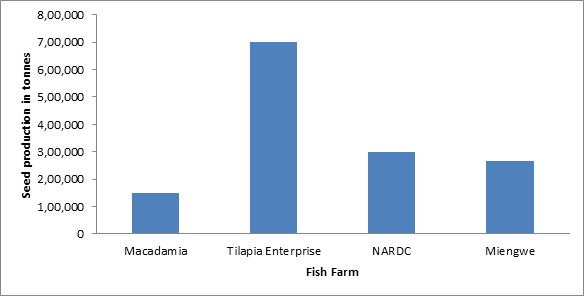
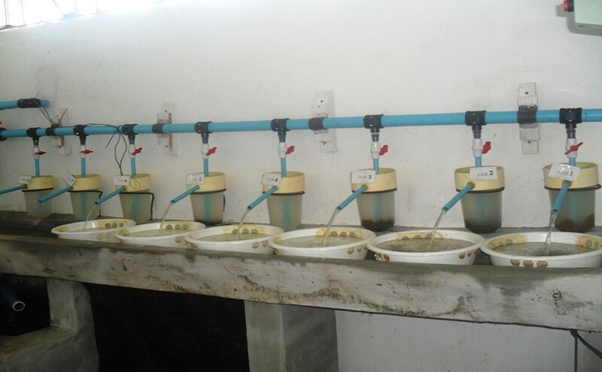
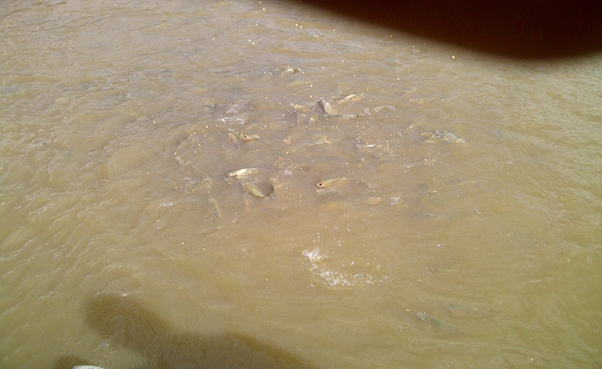
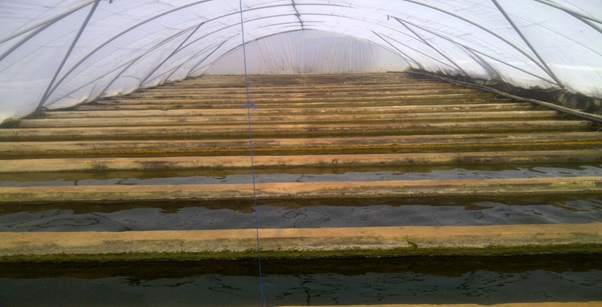
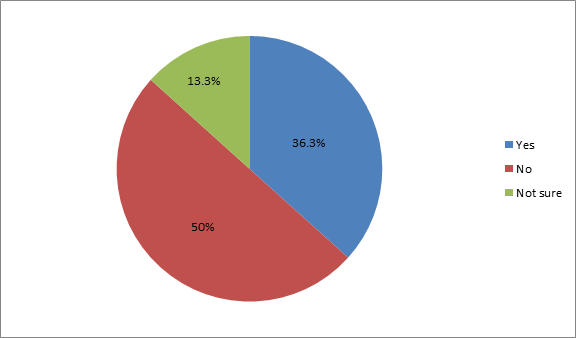
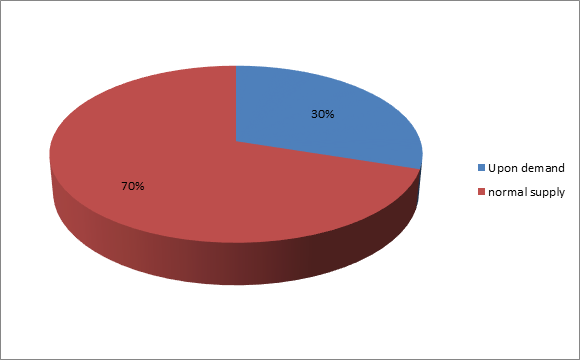
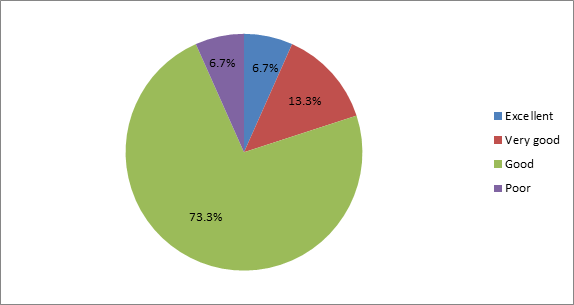
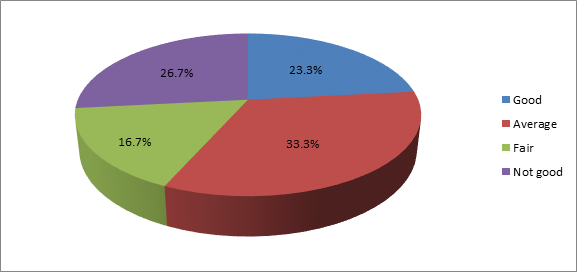
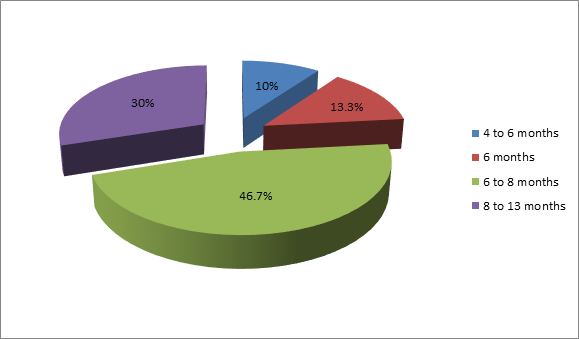
 Scientia Ricerca is licensed and content of this site is available under a Creative Commons Attribution 4.0 International License.
Scientia Ricerca is licensed and content of this site is available under a Creative Commons Attribution 4.0 International License.